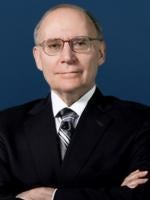Introduction
The United States Tax Court skillfully dodged answering the headline question with a holding on standing. The court decided, however, that IRS appeals officers and IRS appeals team managers are not officers of the United States and therefore do not need to be constitutionally appointed.
Officers of the United States, who exercise “significant authority,” must be appointed under Article II of the Constitution. Non-officer employees, on the other hand, need not be selected in compliance with the Constitution.
In Tooke v. Commissioner,[1] the petitioner (“Tooke”) moved for judgment on the pleadings on the theory that the IRS Independent Office of Appeals (“Appeals Office”) unlawfully determined the petitioner’s tax liability because the Appeals Office personnel who issued the determination were Officers who were not constitutionally appointed. The Tax Court disagreed and denied the taxpayer’s motions.
Constitutional and Statutory Background
The Constitution’s Appointment Clause and Removal Power: The Constitution requires the Senate to consent to the President’s nomination of a Department Head. The Appointment Clause also bestows Congress with the power to appoint other Officers of the United States by stating, “the Congress may by Law vest the appointment of such inferior Officers … in the President alone … or in the Heads of Departments.”[2]
Moreover, although the Constitution does not expressly grant the President the power to remove an Officer of the United States from their position, the Supreme Court has held that the Constitution gives the President power to remove those who assist him in carrying out his duties (the “Removal Power”). The executive power is vested in the President,[3] and without such Removal Power, the President could not be held fully accountable for discharging his own executive responsibilities.[4]
Statutory Creation of the Appeals Office: In 2019, Congress enacted the Taxpayer First Act, which restructured the IRS Office of Appeals and renamed it as the Internal Revenue Service Independent Office of Appeals.
Under the Act, the Appeals Office is now supervised and directed by the Chief of Appeals (“Chief”), who is appointed by the Commissioner of Internal Revenue. The Chief holds a statutory position, which is made without regard to the competitive civil service or the senior executive service.[5]
Two additional roles (appeals officer and appeals team chief) report to the Chief and do not hold statutory positions in the Appeals Office. They are employees hired pursuant to the hiring authority of the commissioner, as opposed to Officers who must be constitutionally appointed if they exercise “significant authority.”[6]
Factual Background
Appeals Office Hearing: Tooke failed to pay assessed income taxes, for which the IRS filed a federal tax lien on his property and issued a notice that it intended to levy on (seize) his property. Tooke requested a collection due process hearing in the Appeals Office, asking it to provide collection alternatives, for example, an agreement to pay the unpaid taxes in installments, in lieu of imposition of a lien and execution of a levy.
The hearing was conducted by an appeals officer. The taxpayer and appeals officer could not agree on a collection alternative, resulting in the issuance by the Appeals Office of a notice of determination of Tooke’s tax liability. The appeals officer prepared the determination, and the appeals team manager approved it.
Tax Court Proceeding: Tooke filed a petition in the Tax Court, arguing that the notice of determination issued by the Appeals Office was unconstitutional because the Chief, at the time of the determination, and the appeals officer and team manager, who issued and approved the determination, were unconstitutionally appointed in violation of the Appointments Clause and the Removal Power. He asked the Tax Court to remand his case to a panel that was constitutionally constituted.
Creation and Structure of the Appeals Office: The Appeals Office hears and determines taxpayer challenges to determinations by the IRS operating divisions, the collection division, and other operations. Taxpayers had expressed concern to Congress that determinations of the Appeals Office were subject to undue influence by the IRS operations that proposed them.
In response, Congress passed the Taxpayer First Act.[7] The Act clarifies that the duties of the Appeals Office are to fairly and impartially reach resolution with the taxpayer of federal tax controversies without litigation, promote consistent application and interpretation of the tax laws, and enhance public confidence in the integrity and efficiency of the IRS.
Standing
The first issue that the Tax Court discussed was whether Tooke had standing to challenge the constitutional authority of the Chief, appeals officer, and appeals team manager. The court held that Tooke had standing to challenge the appeals officer and the appeals team manager who participated in the collection due process hearing but did not have standing to challenge the Chief who did not participate.
Standing has three components: A plaintiff must show that they have a legally protected interest that is injured, that the defendant’s action is traceable to the injury, and that a court can fashion a remedy that redresses the plaintiff’s injury.[8]
- Injury to Tooke:
The Tax Court readily found that the mere conduct of a collection due process hearing by the appeals officer and appeals team manager injured Tooke assuming that the appeals officer and team manager were not constitutionally appointed.
The Tax Court rejected what it characterized as dictum in Landry v. FDIC [9] that would have treated the Chief as also injuring Tooke. The theory in Landry is that an individual who is affected by a proceeding in a department the head of which is not constitutionally appointed is injured even if the department head is “radically attenuated.” Injury occurs because separation of powers in the Constitution is “structural,” that is, the power of each branch is expressed in a separate article and does not require specific evidence of injury. The Tax Court discussed a dozen cases to explain away the dictum, which might suggest that the Tax Court decision on this issue is disputable.
- Tracing of the Injury:
The Tax Court had no difficulty in tracing Tooke’s injury to the appeals officer and team manager who participated in the collection due process hearing.
With respect to the Chief, Tooke argued the root-to-branch theory:
[B]ecause the Chief’s appointment was purportedly unconstitutional, the integrity of Mr. Tooke’s CDP hearing and the determination made thereon by the Appeals Officer and the Team Manager were necessarily marred.
The Tax Court rejected the theory, unwilling to treat the Chief as having injured the taxpayer when the Chief did not participate in the hearing.
The Supreme Court has not expressly addressed whether a plaintiff has standing to bring a Separation of Powers challenge against an official who did not participate in a plaintiff’s case.
- Authority to Redress the Injury:
Solely for the purpose of its standing analysis, the Tax Court also found that, if it had to, it could redress Tooke’s injury by remanding the case to the Appeals Office with instruction to conduct the hearing with constitutionally appointed officers.
But because the Chief did not participate in Tooke’s hearing, the court found no redressable injury by the Chief.
Therefore, the Tax Court held that Tooke lacked standing to challenge either the appointment of the Chief or the restriction on the power to remove the Chief from his position.
To the contrary, the Tax Court found that Tooke had standing to challenge the authority of the appeals officer and appeals team manager who participated in the Appeals Office determination adverse to Tooke.
The issue of standing to challenge the constitutional authority of the Chief was a question of first impression.
Separation of Powers (Appointments Clause and Removal Power)
With the finding that Tooke had standing to challenge the authority of the appeals officer and appeals team manager who issued the adverse tax determination, the remaining question was whether they were officers of the United States.
The court held the appeals officer and appeals team manager were not “Officers of the United States.” Thus, neither the Appointments Clause nor the Removal Power apply to them.
The classification of the appeals officer and appeals team manager as non-United States officers follows a fourteen-year-old Tax Court precedent, Tucker v. Commissioner.[10] The Tax Court opined that the intervening enactment of the Taxpayer First Act[11] and subsequent court decisions relating to separation of powers of the three branches of the federal government[12] did not implicitly overrule Tucker.
Classification of Officers of the United States: In the context of conducting a hearing, an individual is an Officer of the United States if they have the tools and adjudicatory power of a federal district court judge.[13] The Tax Court special trial judges and the SEC administrative law judges are prime examples of administrators who have those tools and power. The Tax Court held that an appeals officer and appeals team manager simply do not because a collection due process hearing lacks the typical processes of a judicial proceeding. Their power was not “significant.”[14]
Conclusion and Comments
The Tax Court denied Tooke’s motions for judgment based on his Appointments Clause argument and his Removal Power argument.[15] It found that, although Tooke had standing against the appeals officer and appeals team manager, they were not officers of the United States and therefore did not require a constitutional appointment.
The Tax Court did not discuss whether the Chief was an Officer of the United States. It was able to avoid that question by denying standing for Tooke against the Chief. It would not be surprising if an appeal is filed, arguing that (i) the Chief is an Officer of the United States, (ii) Tooke’s standing to challenge the Chief should have been based on the Chief’s statutory position rather than his participation in the collection due process hearing, and (iii) the Chief was not appointed by the President, the head of a department, or a court of law, all of which voids a collection due process hearing on his watch. The merit of the argument remains to be seen.
[1] 164 T.C. No. 2 (Jan. 29, 2025).
[2] U.S. Const., Art. II, Sec. 2., cl. 2.
[3] U.S. Const., Art. II, Sec. 1, cl.1.
[4] Seila Law LLC v. Consumer Financial Protection Bureau, 591 U.S. 197, 204 (U.S., 2020). The constitutionality of a statute that restricts the President’s power to remove an officer of the United States is problematic. Tooke relied on 5 USC 7813(a), which provides that “an agency may take an action [including removal] covered by this subchapter against an employee only for such cause as will promote the efficiency of the service.” It is questionable whether 5 USC 7813(a) applies to the Chief’s position. The Tax Court did not discuss the question.
[5] IRC §7803(e).
[6] §7804(a); Buckley v. Valeo, 424 U.S. 1 (1976).
[7] Supra note 3.
[8] Tooke, No. 2, 164 T.C. at – .
[9] 204 F.3d 1125, 1128 (D.C. Cir. 2000).
[10] 679 F.3d 1129 (D.C. Cir. 2012, aff’g 139 T.C. 2010).
[11] Pub. Law 116-25 §1001(a), codified at IRC §7803(e) (effective July 1, 2019).
[12] Lucia v. Securities and Exchange Comm’n, 585 U.S. 237 (2018) (administrative law judge is Officer of the United States), United States v. Arthrex, Inc., 494 U.S. 131 (2021) (administrative patent judge is Officer of the United States).
[13] Lucia, 585 U.S. at 241; Arthrex, Inc., 594 U.S. at 13.
[14] Cf. Buckley v. Valeo, 424 U.S. 141-142 (1976) (“Yet each of these functions also represents the performance of a significant governmental duty exercised pursuant to a public law. …These administrative functions may therefore be exercised only by persons who are “Officers of the United States.”)
[15] Tooke, No.398-21L, order served Jan 30, 2025).





 />i
/>i
